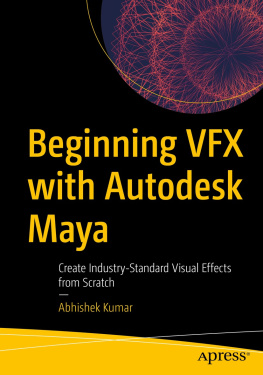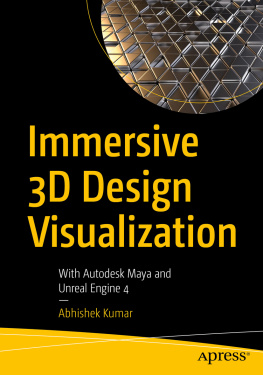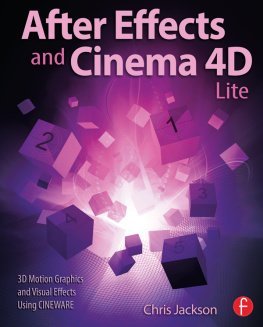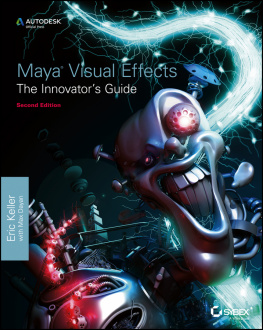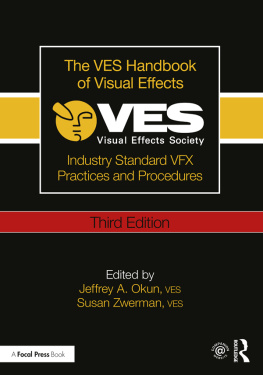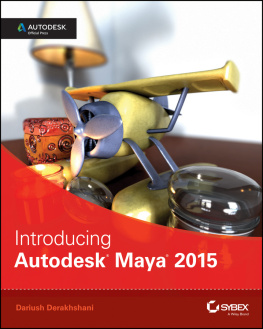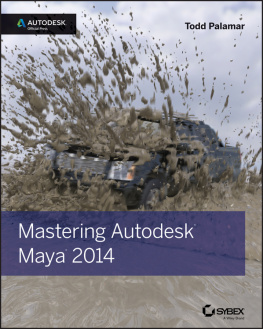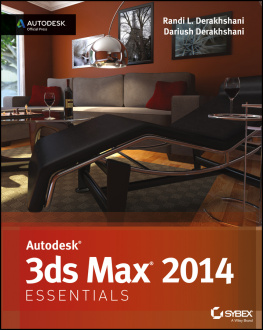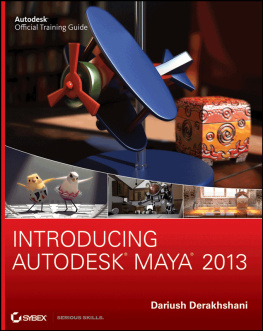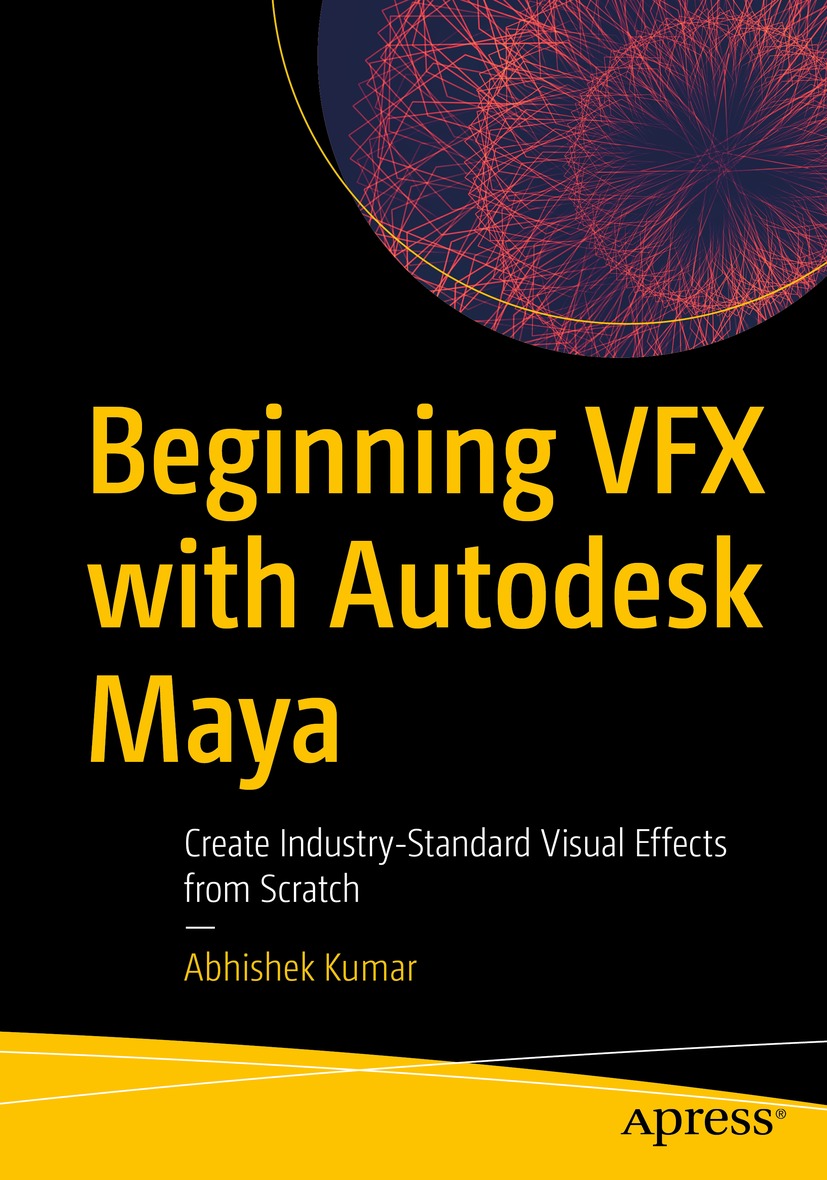Abhishek Kumar
Beginning VFX with Autodesk Maya
Create Industry-Standard Visual Effects from Scratch

Logo of the publisher
Abhishek Kumar
Varanasi, Uttar Pradesh, India
ISBN 978-1-4842-7856-7 e-ISBN 978-1-4842-7857-4
https://doi.org/10.1007/978-1-4842-7857-4
Abhishek Kumar 2022
Standard Apress
Trademarked names, logos, and images may appear in this book. Rather than use a trademark symbol with every occurrence of a trademarked name, logo, or image we use the names, logos, and images only in an editorial fashion and to the benefit of the trademark owner, with no intention of infringement of the trademark. The use in this publication of trade names, trademarks, service marks, and similar terms, even if they are not identified as such, is not to be taken as an expression of opinion as to whether or not they are subject to proprietary rights.
The publisher, the authors and the editors are safe to assume that the advice and information in this book are believed to be true and accurate at the date of publication. Neither the publisher nor the authors or the editors give a warranty, express or implied, with respect to the material contained herein or for any errors or omissions that may have been made. The publisher remains neutral with regard to jurisdictional claims in published maps and institutional affiliations.
This Apress imprint is published by the registered company APress Media, LLC part of Springer Nature.
The registered company address is: 1 New York Plaza, New York, NY 10004, U.S.A.
To Mom, Usha Sinha and Dad, Prof. B. K. Prasad and my beloved wife, Alka, for 12 fantastic years of marriage and many more to come. To my daughter, Rishika Ryan, and my son, Shivay Singh Ryan. I love you all.
Any source code or other supplementary material referenced by the author in this book is available to readers on GitHub via the books product page, located at www.apress.com/978-1-4842-7856-7 . For more detailed information, please visit http://www.apress.com/source-code .
Acknowledgments
It gives me immense pleasure to express my deep gratitude to my mentors, Prof. Saket Kushwaha and Prof. Alok Kumar Rai, and my PhD supervisor, Dr. Achintya Singhal, Associate Professor, Banaras Hindu University.
Prof. Kushwaha and Prof. A. K. Rai are my inspiration for this endeavor; without their encouragement, support, and guidance, this book would not have been possible.
I would also like to thank Yupeng Zhang (TR), Spandana Chatterjee (AE), Divya Modi (CE), and Laura Berendson (DE) for the initiation to publish this book. Their comments and suggestions resulted in numerous refinements and corrections that improved its quality.
A special thanks to Mrs. Rini Dey, PhD research scholar at JAIN; Dr. Vijayakumar Varadarajan, Professor at The University of New South Wales, Australia; and Thinagaran Perumal, Associate Professor at Universiti Putra Malaysia, Malaysia for providing unconditional support.
Table of Contents
About the Author
Dr. Abhishek Kumar
is an Apple Certified Associate, an Adobe Education Trainer, and is certified by Autodesk. He has a PhD in computer applications and a masters degree in animation and computer science. He finished his post-doctoral fellowship at Imam Mohammad Ibn Saud Islamic University, Saudi Arabia.
He is actively involved in course development in animation and design engineering at various institutions and universities. He has published a number of research papers and covered a wide range of topics in various digital scientific areas (including image analysis, visual identity, graphics, digital photography, motion graphics, 3D animation, visual effects, editing, and composition). He holds ten patents in the fields of AI, design, and IoT.
Dr. Kumar has completed professional studies related to animation, computer graphics, VR, stereoscopy, filmmaking, visual effects, and photography from Norwich University of Arts, University of Edinburg, and Wizcraft MIME & FXPHD, Australia. He is passionate about media and the entertainment industry and has directed two short animated films. Dr. Kumar has trained more than 1,00,000 students across the globe from 153 countries (including from India, Germany, United States, Spain, and Australia). His alumni have worked on national and international movies.
Dr. Kumar has delivered more than 100 workshops and seminars as a subject matter expert/resource person at Delhi University, GGU Central University, Savitribai Phule University, Anna University, Rajiv Gandhi Central University, Allahabad University, Banaras Hindu University, MANNU Hyderabad, Gujrat Technological University, TMU, GIET University, NITs, IITs, and several international institutes/universities. His goal is to bring awareness to the future of e-learning, MOOCs, virtual reality, animation design, and VFX as a career opportunity and as an immersive technology for educators.
About the Technical Reviewer
Yupeng Zhang
is a senior software developer for Autodesk Maya Animation, which developed the Cached Playback workflow for the Nucleus and Bullet FX system. Before working at Autodesk, he received his masters degree in computer graphics from the University of Toronto, building multiple modeling and animation tools for VR. Besides coding, he may have a video game addiction!
The Author(s), under exclusive license to APress Media, LLC, part of Springer Nature 2022
A. Kumar Beginning VFX with Autodesk Maya https://doi.org/10.1007/978-1-4842-7857-4_1
1. Introduction to Visual Effects (VFX)
Abhishek Kumar
(1)
Varanasi, Uttar Pradesh, India
Visual effects play a vital role in every aspect of the entertainment industry. They have extended their purview into e-learning and are an emerging technology in the field of digital education. Creative visual effects design saves designers, manufacturers, and customers time, money, and effort. This book dives into the nuances of visual effects design, from planning to execution. Visual effects give viewers an immersive experience by creating realistic CGI (Computer-Generated Imagery ) effects.
This chapter discusses the significance of visual effects, as well as the many sectors in which visual effects, also called VFX, operate. The chapter covers the present scope of visual effects and its growing popularity in visual media.
The Importance of Visual Effects
Visual storytelling is no longer an alien concept . What makes the visual medium so amazing to watch are the mind-boggling computer-generated special effects, as shown in Figure . Films, television series, games, and now even the educational tech industry is overflowing with bewildering visual effects. Moreover, with the emergence of OTT (over the top) platforms, there has been increasing demand for content, which has led to a demand for all kinds of visual effects. As Jim Morris, VES general manager and president of Pixar Animation Studios, stated, We are in the golden age of visual effects and we should take time to recognize that and celebrate it.

